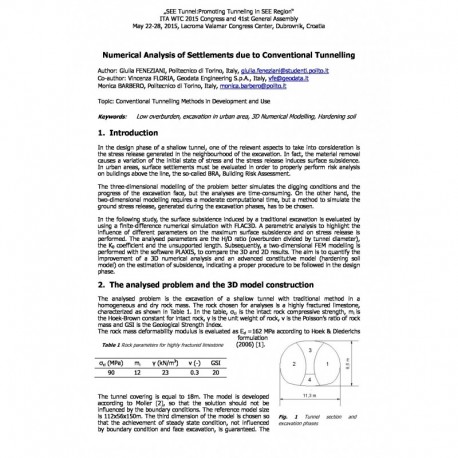Cart
0
0
No document
0,00 €
Total
Document successfully added to your shopping cart
Quantity
Total
There are 0 items in your cart.
There is 1 item in your cart.
Total documents
Total shipping
To be determined
Total
Search & filter
Search for a publication
Search & filter
Viewed documents

Numerical Analysis of Settlements due to Conventional Tunnelling
wtc2015_full_feneziani
V. Floria / G. Feneziani / M. Barbero
In the design phase of a shallow tunnel, one of the relevant aspects to take into consideration is the stress release generated in the neighbourhood of the excavation. In fact, the material removal causes a variation of the initial state of stress and the stress release induces surface subsidence. In urban areas, surface settlements must be evaluated in order to properly perform risk analysis on buildings above the line, the so-called BRA, Building Risk Assessment. The three-dimensional modelling of the problem better simulates the digging conditions and the progress of the excavation face, but the analyses are time-consuming. On the other hand, the two-dimensional modelling requires a moderate computational time, but a method to simulate the ground stress release, generated during the excavation phases, has to be chosen. In the following study, the surface subsidence induced by a traditional excavation is evaluated by using a finite-difference numerical simulation with FLAC3D. A parametric analysis to highlight the influence of different parameters on the maximum surface subsidence and on stress release is performed. The analysed parameters are the H/D ratio (overburden divided by tunnel diameter), the K coefficient and the unsupported length. Subsequently, a two-dimensional FEM modelling is performed with the software PLAXIS, to compare the 3D and 2D results. The aim is to quantify the improvement of a 3D numerical analysis and an advanced constitutive model (hardening soil model) on the estimation of subsidence, indicating a proper procedure to be followed in the design phase.


